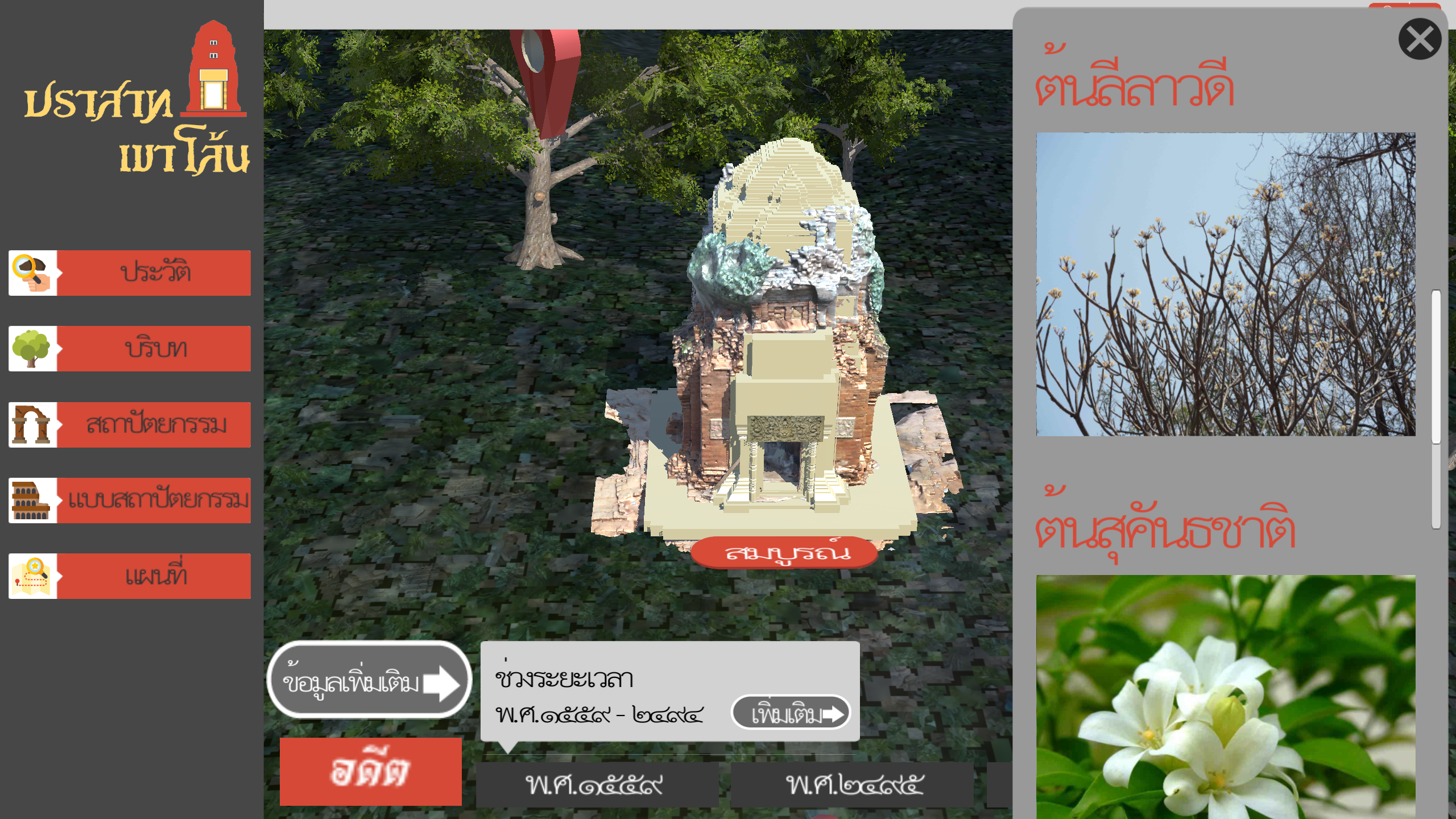Designing Illustration System for Archeological Information by Augmented Reality: A Case of Prasat Khao Lon, Sakaew
Main Article Content
Abstract
Illustration of archeological is a key factor for tourist or lay people to interested in historical monuments. At present, technological plays a significant role in historical monuments illustration. Most of 2D information system, which is only allow users to visualize architectural elements with limitation, compared with real building or physical model is more tactile allowing users to easily understand spatial information. The objective of this research is to create information technology system for historical monuments illustration using augmented reality and 3D printing technology. This method allows the system users to understand archeological information beyond limitation of current illustration system, such as building modification in a period of time and space. Our experimental site is Prasat Khao Lon, Sakaew Province. This archeological site is partially collapsed, which is suitable to our presentation system that can visualize miss part of the building.
Downloads
Article Details

This work is licensed under a Creative Commons Attribution-NonCommercial-NoDerivatives 4.0 International License.
All material is licensed under the terms of the Creative Commons Attribution 4.0 International (CC-BY-NC-ND 4.0) License, unless otherwise stated. As such, authors are free to share, copy, and redistribute the material in any medium or format. The authors must give appropriate credit, provide a link to the license, and indicate if changes were made. The authors may do so in any reasonable manner, but not in any way that suggests the licensor endorses you or your use. The authors may not use the material for commercial purposes. If the authors remix, transform, or build upon the material, they may not distribute the modified material, unless permission is obtained from JARS. Final, accepted versions of the paper may be posted on third party repositories, provided appropriate acknowledgement to the original source is clearly noted.
References
Azuma, R, T. (1997). A survey of Augmented Reality. Presence: Teleoperators And Virtual Environments, volume 6,issue 4, (pp. 355-385).
Chutma, B. (2011). Prasat Khao Lon the Heritage Civilization “Angkor Phan” Retrieved from http://oknation.nationtv.tv/blog/pateng/2011/05/24/entry-1.
Fleming, N. (1992). VARK: A guide to learning style. Retrieved from https://vark-learn.com.
Galmangoda, G. D. D. M., Gajanayake, P. Y .S., Indika, K. P., Rajapaksha, N. R., & Jayaweera, Y. (2016). Augmented Reality to Reconstruct Sri Lankan Cultural Heritage in Prime State: HeladivaAR. Symposium on Statistical & Computational Modelling with Applications (SymSCMA – 2016), (pp. 40-44). Department of Statistics & Computer Science, University of Kelaniya, Sri Lanka.
Jitaree, A. (2015). What is a 3D Printer? Retrieved from http://janissatacartoon.blogspot.com/2015/07.
Nagakura, T., & Sung, W. (2015). Ramalytique: Augmented Reality in Architectural Exhibitions, Massachusetts Institute of Technology. Proceedings of the 19th International Conference on Cultural Heritage and New Technologies 2014 (CHNT 19, 2014), (pp. 1-20). Retrieved from http://cat2.mit.edu/multirama/CHNT2014_TN_Ki_paper_v17_imaged_small.pdf.
Ngamchindavongse, K., & Busayarat, C. (2018). Designing Presentation System for Archeological Information by Augmented Reality to Physical Model: A Case of Prasat Khao Lon, Sakaew. Built Environment Research Associates Conference, (BERAC9, 2018), (pp. 220-226).
Rossi, D., Petrucci, E., & Olivieri, A. (2014). Projection-Based City Atlas: An Interactive, Touchless, Virtual Tour of the Urban Fabric of Ascoli Piceno. International Conference on Virtual Systems & Multimedia (VSMM), (pp. 310-317). Retrieved from https://ieeexplore.ieee.org/abstract/document/7136672/citations?tabFilter=papers#citations.
Suanpaga, W. (2017). Model meaning or model. Retrieved from http://pirun.ku.ac.th/~fengwks/SD/2model.pdf.


